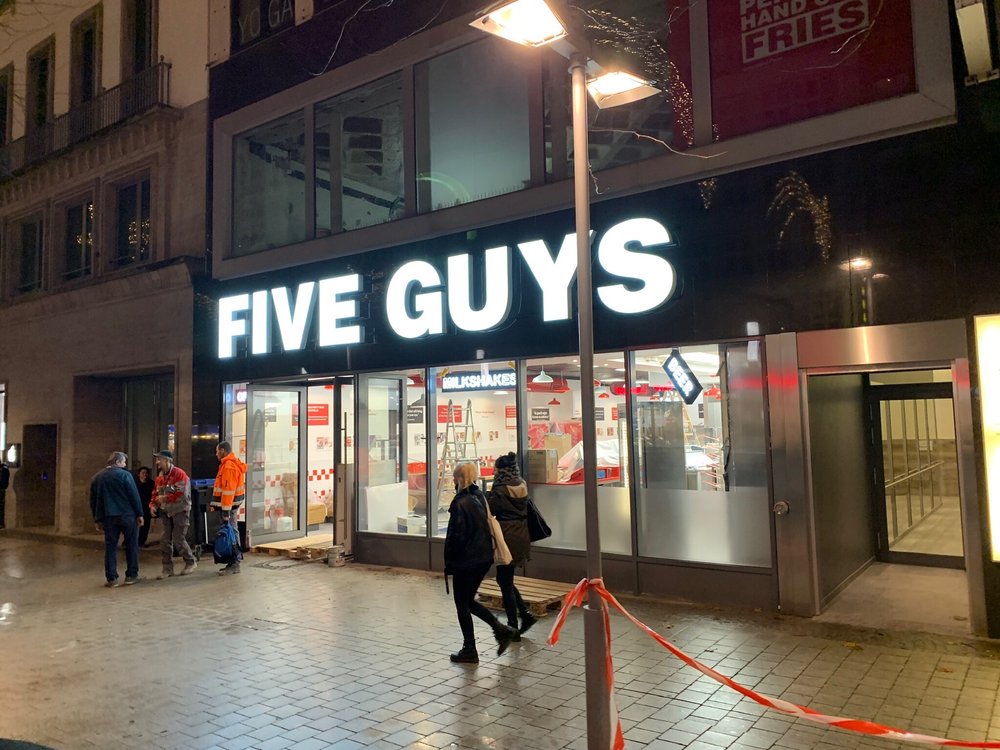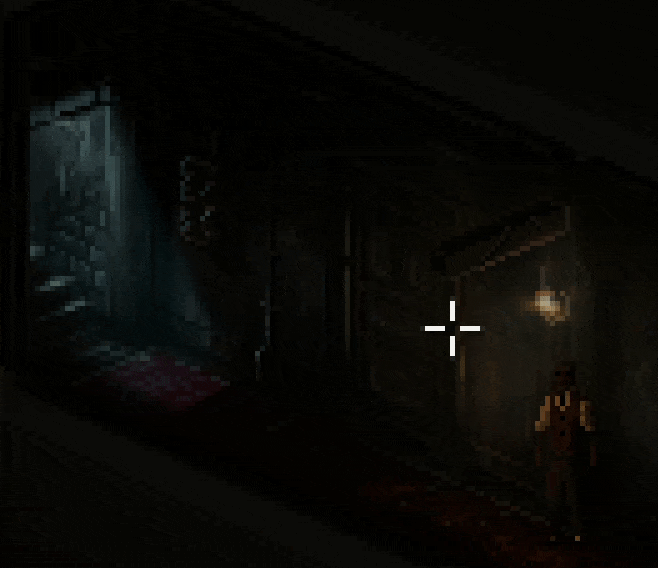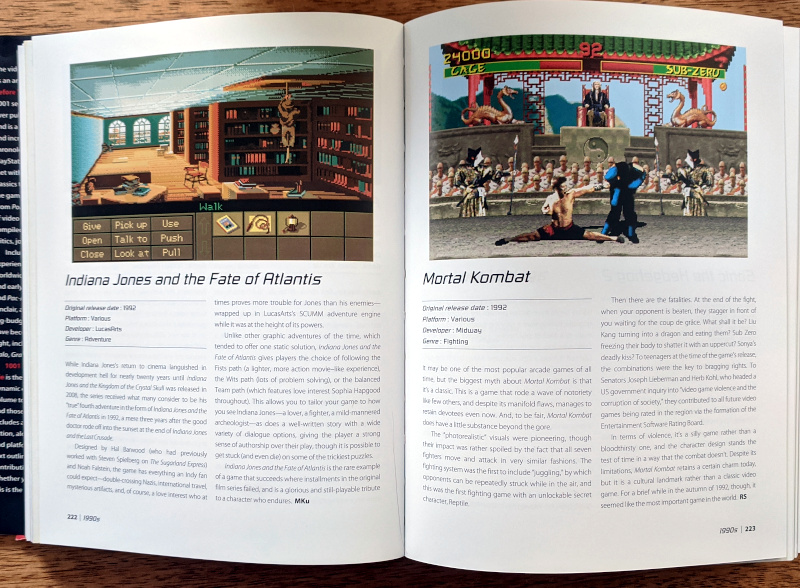Latest reviews
Von außen sieht der Bau ein bisschen aus wie der ehemalige Palast der Republik in Berlin. Innen ist es aber wesentlich moderner aufgebaut.

Aussenansicht des Heinz Nixdorf MuseumsForums in Paderborn (Eigenes Werk. Lizenz: CC-BY-SA.)
Die Exponate im Museum erstrecken sich von den Anfängen der Daten im zweiten Jahrtausend vor Christus bis hin zur heutigen Zeit. Dabei sind die Schritte und die Technik, anhand von sehr vielen Exponaten visualisiert, beeindruckend und machen einem unmittelbar bewusst, das man scheinbar auch schon zum alten Eisen gehört. Von Schreibmaschinen über Tonbandgeräte und Vermittlungsstellen der damaligen Bundespost bis hin zur heutigen Technik kommt mir sehr viel bekannt und vertraut vor.
Viele Exponate kann man anfassen und ausprobieren und dabei gefiel mir besonders die Vermittlungsstelle mit den Hubdrehwählern - einfach toll!
Interessant sind ebenfalls die Roboter, die einen zu einem gewünschten Bereich oder Exponat führen können.
Das Museum gibt viele Impulse in Sachen zeitgemäßer technischer Präsentation lässt jedoch, meiner Meinung nach, das finale etwas vermissen. Für den Eintrittspreis und Umfang der Ausstellung gibt es daher die zweithöchste Wertung von mir.
Vor langer Zeit war ich einmal in einem Ableger dieser Kette in London und hatte nur sehr gute Erinnerungen. Der Geschmack, die Konsistenz und der Service waren wirklich sehr gut. Dementsprechend hoch waren meine Erwartung an die Filiale in Hannover.

Aussenansicht der Five Guys Filiale in Hannover (Eigenes Werk. Lizenz: CC-BY-SA.)
Um es kurz zu machen: ich wurde in allen Punkten enttäuscht. Beim ersten Besuch, kurz nach Eröffnung, war der Service noch komplett unorganisiert und die Bedienung der Kasse schien unmöglich. Bei meinem zweiten Besuch war dann alles von den Pandemiemaßnahmen betroffen. Einziger Lichtblick: es gibt keine Papierlisten, die für alle eingesehen werden können. Daran können sich viele Gastronomen ein Beispiel nehmen.
Die Fritten sind in meinen Augen indiskutabel roh. Etwas mehr Zeit in der Friteuse wurden Wunder bewirken. Der Burger hat meine Erwartungen ebenfalls nicht erfüllt. Vielleicht waren meine Erwartungen zu hoch oder die Qualität war wirklich schlecht. Oder eine Mischung aus beidem.
Five Guys wird wahrscheinlich noch eine Chance nach der Pandemie bekommen. Vielleicht ist dann ja alles anders.
After reading reviews online, I had some expectations for this place and unfortunately I was disappointed.
Maybe the staff has changed, but this time around the server wasn’t particularly friendly.
I ordered the a set of two samosas and the Vegetarian Curry. I specifically asked if the curry was vegan, and the waiter confirmed it was. Apparently, it also accompanied a drink and ice cream, which I didn’t realize until it was too late. While this is partly my fault, the waiter, armed with the knowledge that I specifically asked for a vegan dish, brought me dairy ice cream anyway.
The samosas were good, but a little pricy (almost 600 yen for 2 pieces?). The curry tasted fine. The presentation could’ve been better, though. Maybe because the plates they use are pretty large, it gave the impression that there wasn’t much food on the plate. I’m still not sure if the portion was small or the plate too large. Either way, it wasn’t a great impression.
I didn’t have a good experience here, so I would recommend people go to La Quinua (Peruvian-Mexican food) or Vegetus Sara (Japanese food), which are all within walking distance to each other. Vegan options at Indian/Sri Lankan/Nepali restaurants are easy to come by wherever you go, so you can easily skip this place.
Pros: Food was alright
Cons: Small portions, inattentive customer service
The food was so good I ate here everyday during my three-day stay in Yakushima, and it was also great that the dishes were different every time. On my last day, I ordered the bento, which was delicious as well.
Asuka clearly puts a lot of love into what she cooks, and you can definitely feel it when you eat it. There were so many different kinds of tastes that were new to me. Everything was simple and delicious.
If you’re coming to Yakushima, I recommend you make this a priority as important as the tourist spots you’re planning to see. You won’t want to miss this place!
Pros: The food is amazing, the owner is super friendly, the atmosphere is relaxing
Cons: None
Are we born with brains that are blank slates waiting only to be filled with experience? And if so, why is it so difficult to simulate that same experience in a computer? Why can a sophisticated AI be easily tricked into thinking that a cat is guacamole or that a Granny Smith apple is an iPod? How have human brains managed to adapt to the diversity of environments across the globe, from the Stone Age to the Space Age?
In How We Learn: Why Brains Learn Better Than Any Machine … for Now, French neuroscientist Stanislas Dehaene shows that the “blank slate” hypothesis does not withstand scrutiny. Our brains are equipped, from birth, with specialized neural circuits that shape a child’s intuitions about physics, arithmetic, geometry, and probability.
Dehaene cites a large body of research (including his own) that shows how young infants’ brains make sense of the world using this “core knowledge”. This research has forced a re-appraisal of older psychological models that have become popular wisdom:
Incidentally, these results overturn several tenets of a central theory of child development, that of the great Swiss psychologist Jean Piaget (1896–1980). Piaget thought that young infants were not endowed with “object permanence”—the fact that objects continue to exist when they are no longer seen—until the end of the first year of life.
He also thought that the abstract concept of number was beyond children’s grasp for the first few years of life, and that they slowly learned it by progressively abstracting away from the more concrete measures of size, length, and density.
In reality, the opposite is true. Concepts of objects and numbers are fundamental features of our thoughts; they are part of the “core knowledge” with which we come into the world, and when combined, they enable us to formulate more complex thoughts. [p. 58]
Brains vs. Machines
Like a budding scientist, an infant’s brain forms predictions about the world and then adapts its wiring based on whether the predictions match reality. This neuroplasticity is powerful, but it is highest during early sensitive periods, and dependent on innate cognitive skills—a number sense, the ability to detect faces, to acquire languages, and so on.
Dehaene contrasts this with the current generation of artificial networks, which are closer to a “blank slate” on which the characteristics of a training dataset are gradually inscribed. As a result of this naive approach, AIs lack the human brain’s multifaceted reasoning skills—”for now”, as the book’s subtitle puts it.
Hinting at what tomorrow may bring, Dehaene cites examples of artificial neural networks modeled after human cognition. For instance, a 2008 algorithm for predicting the optimal structural representation of various datasets “rediscovered” human knowledge representations like the tree of life.
One may quibble with the author’s assertion that human brains learn “better” than machines, given that the latter have already excelled in specific domains. Just ask Go player Lee Sedol, who retired from professional play and called AI “an entity that cannot be defeated”.
A Theory of Learning
But the focus of the book are humans, not machines. The author’s goal is nothing less than a theory of learning that teachers, parents, and students can apply in practice. He suggests a model based on “four pillars of learning”: attention, active engagement, error feedback, and consolidation.
From these four pillars he develops concrete recommendations for educators. Many of them may match the instincts of progressive teachers: anxiety and stress prevent learning; students need to be engaged as individuals; sleep is essential. However, Dehaene is highly critical of unassisted discovery learning and the popular idea of learning styles.
Dehaene does not take a one-sided view in the “nature versus nurture” debate; instead, he explains the complex interplay between our biology and the world we inhabit. Biological evolution has placed constraints on us, but it has also allowed us to reason about the workings of our own brains, and to journey to other planets.
The Verdict
As a whole, I highly recommend Dehaene’s book. As befits the subject, he is a great (occasionally witty) teacher who uses straightforward explanations and illustrations in order to systematically advance the reader’s understanding of a complex subject.
While I found the author’s level of certitude—when he talks about animal intelligence or learning styles, for example—a bit off-putting at times, that too can be the mark of a teacher in love with their subject. It is a passion he successfully passes on to the reader.
Sehr gute Lage und ein sehr gutes Frühstücksbüffet waren die Gründe, uns hier ein Zimmer zu nehmen. Trotz der unmittelbaren Lage an einer vielbefahrenen Straße - PKW und Straßenbahn - war vom Lärm im Zimmer so gut wie nichts zu vernehmen. Durch die alte Bauweise waren die Mauern sehr lärmundurchlässig. Das gilt leider nicht für die Türen. Sehr schade, wenn nebenan Gäste untergebracht sind, die eine Tür nicht mit Klinke schließen können.
Blick ins Bad (Eigenes Werk. Lizenz: CC-BY-SA.)
Wen es interessiert, dem sei gesagt, das im TV kein deutscher Sender empfangsbar war aber wer kommt schon nach Prag um in die Glotze zu starren? Das Zimmer mit Bad im Allgemeinen und die Matratze im Besonderen waren ok.
Blick auf das Bett im Hotelzimmer (Eigenes Werk. Lizenz: CC-BY-SA.)
Aber das hat man schnell vergessen wenn man beim Frühstück ist. In dieser Preisklasse habe ich so etwas noch nicht gesehen. So eine umfangreiche Auswahl gibt es in Deutschland bei drei Sternen nicht.
Teil des Frühstücksbuffets (Eigenes Werk. Lizenz: CC-BY-SA.)
Frühstücksbuffet (Eigenes Werk. Lizenz: CC-BY-SA.)
Das Personal an der Rezeption ist nett, spricht sehr gutes English und ein bisschen Deutsch. Begrüßt und verabschiedet wird man mit einem tschechischen Schnaps und wer eine Frage hat kann sich sicher sein, das ihm geholfen wird.
If On A Winter’s Night, Four Travelers is a gift—literally. The indie game by Laura Hunt and Thomas Möhring is completely free, but you could easily mistake it for a commercial title. Its pixel art compares favorably both to classic point and click adventure games by LucasArts, and to modern ones like Kathy Rain. Möhring’s other credits include stunning concept art for the Netflix show The Queen’s Gambit, and each scene in the game feels like a small work of art in its own right.
The four titular travelers meet at a masquerade ball that takes place on a train in the late 1920s. Most of the story is told through flashbacks in which you experience a defining episode in the life of one of them. Behind their masks are troubled souls—as the player, can we only experience their stories, or change them? Like Italo Calvino’s book that inspired the game’s title, the game suggests that we interrogate it, not merely consume it.
This is not a lighthearted romp—think I Have No Mouth, But I Must Scream, not Monkey Island. You’ll be confronted with themes like mental illness and homophobia, and with graphic depictions of violence. Hunt and Möhring invite us to put on a mask and imagine the lives of these characters, whose worlds come alive in the game’s art and music. For the soundtrack, the developers have drawn on freely available recordings of classical music and songs from the depicted era.

Lighting effects and subtle animations make even small scenes, like this brief encounter in a hallway, highly memorable. (Credit: Laura Hunt and Thomas Möhring. Fair use.)
There are small puzzles you have to solve to advance in the story, but none are likely to stump you for very long. That’s in part because there’s no inventory—you occasionally have to pick up an item, but you then immediately use it elsewhere in the scene. It’s point and click reduced to its essence.
With these simple mechanics, the game achieves surprising depth. For example, in the first story, you choose whether to interpret a telegram you have received from a lover positively or negatively. Depending on your choice, many subsequent interactions and observations will be different. In another story, you have to pay attention to sounds and voices instead of hunting for pixels.
Hunt and Möhring have made it clear that they do not want to be paid for the game, but they have suggested that an artbook and soundtrack may become available for purchase at a later date. If On A Winter’s Night, Four Travelers, then, is like a book you can pick up at any time from the library called the Internet. If you’re in the mood for a story that shows a little more darkness than light, I strongly encourage you to check it out.
Since the ascent of “casual” gaming, the explosion of online game publishing, and the rise of esports, video games have become mass culture for people of all ages. It’s only natural then to come across books like 1001 Video Games You Must Play Before You Die. The title a suggests grand curatorial ambition which the book never quite realizes.
It covers games across all devices and is organized chronologically, starting in 1971 (The Oregon Trail) and ending in 2013 (Bioshock Infinite). The book inexplicably focuses the bulk of its attention on titles from the 2000s (pages 416 to 921). So, prepare to read lots about the various Grand Theft Auto titles and Guitar Hero type games. On the other hand, Sierra Online’s entire catalog of adventure games is reduced to a single title (The Beast Within: A Gabriel Knight Mystery).

Most games in the book are as lavishly illustrated as the ones visible here. Some reviews, however, are entirely without screenshots. (Credit: Universe Publishing / Quintessence Editions Ltd. Fair use.)
The reviews of each title include plenty of criticism (sometimes so much that one has to wonder why the game made the cut at all), but no scores. With a large number of contributing writers, the quality of the writing is inconsistent. Some authors do an excellent job capturing a game’s ambience, story and gameplay; others barely describe the game at all, dwelling instead on development history and other minutiae.
My biggest frustration was that some games were included without any screenshots whatsoever—and we’re not talking about text adventures here, but titles like Elite or Nintendogs. This is the exception, but it’s still a cardinal sin for this kind of book, and the reason I can only give it three stars.
All in all, I don’t regret keeping this hefty compendium on my shelf, but if you’re looking for video game curation done well (with a lot more love for older games), I would recommend checking out the many titles by Bitmap Books instead.
So, what is your robot going to look like? Will it be a box with eyes on wheels, a flying furry puppet, a spider-robot with 360-degree vision? Make your selection and be presented with—another screen of text.
Choice of Robots is a game by Choice of Games, a company that should not exist. At least not if gaming followed the conventional history in which video game genres are forged in the fire of one generation of computing hardware, only to be wiped out in the avalanche of the next. Text adventures? They have gone the way of the dodo and the cathode-ray tube, surely.
Not quite. In 2009, Choice of Games released “Choice of the Dragon”, a text-based adventure game that became a smash success on mobile devices. Since then, they have released more than 100 titles under the “Choice of” label. The company has also made its game engine available under a license that permits noncommercial use, and they publish an endless flow of user-created titles.
It’s hard to explain the appeal of “Choice of” games if you haven’t played one. So go ahead, and try the damn dragon game in your browser. While the games share similarities with “Choose Your Own Adventure” gamebooks (“to attack the dragon, turn to page 69”), they offer a much larger number of choices, track internal variables, and do other things that computers can and books can’t. One thing they don’t do: trying to parse text input (“GET LAMP”). If you’ve ever played an old school text adventure, the parser is the one thing likely to drive you bonkers, because typing the exact words the computer expects can be a stochastic nightmare.

Just a few paragraphs of text, next choice. A bit more text, next choice. The formula works beautifully to get you to read a book without realizing it. (Credit: Choice of Games / Kevin Gold. Fair use.)
Robots then! Choice of Robots author Kevin Gold knows 01 thing or 10 about them. An Assistant Teaching Professor at Northeastern University, he “received his PhD from Yale University in 2008 for research on how robots could learn the meanings of pronouns and other abstract words from examples.” Choice of Robots isn’t about pronouns, though—it’s more about fulfilling that fantasy of “conquering Alaska with your robot army” that you’ve always had. OK, you also do get to pick your robot’s pronouns.
You start the game designing your robot and then walk down your chosen path, to achieve your destiny as a reclusive robot tinkerer or a power-mad corporate overlady. Yes, those are the only two options. Just kiddding.
The game beautifully adapts to your decisions. If you want your Alaska fantasy, that’s what you’ll get (hey, no judgment). If you want a love story, that’s what you’ll get. If you want a tale in which hyperintelligent robots become good-natured shepherds of their obsolete human builders, that’s probably also what you’ll get, but ask your robot supervisor.
Aside from the romantic options being fairly limited—this ain’t a robot dating sim—none of these paths feel underdeveloped. Gold’s writing draws upon the real world (let your professor introduce you to the military-industrial complex), on myths and legends (dress up as Hephaestus at a party), on literary references (quote The Tempest at a funeral), and much more. It does so while staying lighthearted and unpretentious, even as Gold’s PhD ever looms in the game’s byline.
Choice of Robots may make you think about what the future holds, but most of the philosophical ground it visits is well-traveled. It’s in the nature of the game to not be morally prescriptive. In other words, you can be clearly quite evil, if that’s how you want to play it. As an interactive story, it’s a masterclass that’s sure to keep you entertained for a few hours. To send your flying muppet into the world, it’s well worth the six bucks.
The Last Birdling is a visual novel by indie developer Marcus “InvertMouse” Lam released in 2017, two years after Cursed Sight (review). It tells the story of the secretive relationship between two girls, a human named Tayo and a birdling named Bimonia. The birdlings are winged humanoid creatures that once dominated the wild—but after a great war with the humans, Bimonia and her mother may be the last birdlings alive.

As a young woman, Tayo is drawn further into the conflict between birdlings and humans. (Credit: InvertMouse. Fair use.)
A a child, Tayo befriends Bimonia in the forest near a human settlement. For both girls, their growing friendship is a chance to escape their protective and demanding mothers, and to experience the joy of discovering the world through the eyes of another. But humans still view birdlings as dangerous monsters. If Bimonia is spotted by the townspeople, the result will almost certainly be bloodshed—and Tayo will be branded a traitor for becoming a birdling’s friend.
As the player, your perspective alternates between the two protagonists, and you are prompted to make many small choices. As Tayo, do you swallow a rotten herb offered to you by Bimonia, even though it may make you ill? The effect of these choices is limited until the end, when the nature of the relationship between Tayo and Bimonia leads to one of five endings.
Regardless of your decisions, this is not a cheerful tale. While the game is generally not visually explicit, it includes textual descriptions of violence, death, and sexual assault.
A well-crafted tale
Technologically, The Last Birdling is a solid title that showcases InvertMouse’s growing mastery over the visual novel format. The characters are visually expressive and the game is well-paced, offering beautiful chapter transition screens as the story progresses. As a player, it’s easy to visit the different endings without re-reading old text.
The game attempts a fair bit of worldbuilding, including a glossary that fleshes out concepts touched upon in the story. The quality of the writing is sometimes uneven, but never distractingly so. As in some of InvertMouse’s other stories, the characters do have a tendency towards self-loathing that gets a bit tiresome.
The Last Birdling is a better title than Cursed Sight in almost every respect, but in spite of that, I found it less emotionally impactful. The ambiguous relationship between Bimonia and Tayo pulled me away from the characters to the larger themes of the story. As a result, even the most tragic events packed less of a punch.
Nonetheless, The Last Birdling is a good story. I would recommend it to fans of the visual novel genre, if you’re in the mood for a fantasy tale about forbidden friendship that visits some dark places. At $5 it’s a small price for a labor of love by a storyteller of maturing talent.
